Clifford Brycelea
(b. 1953)
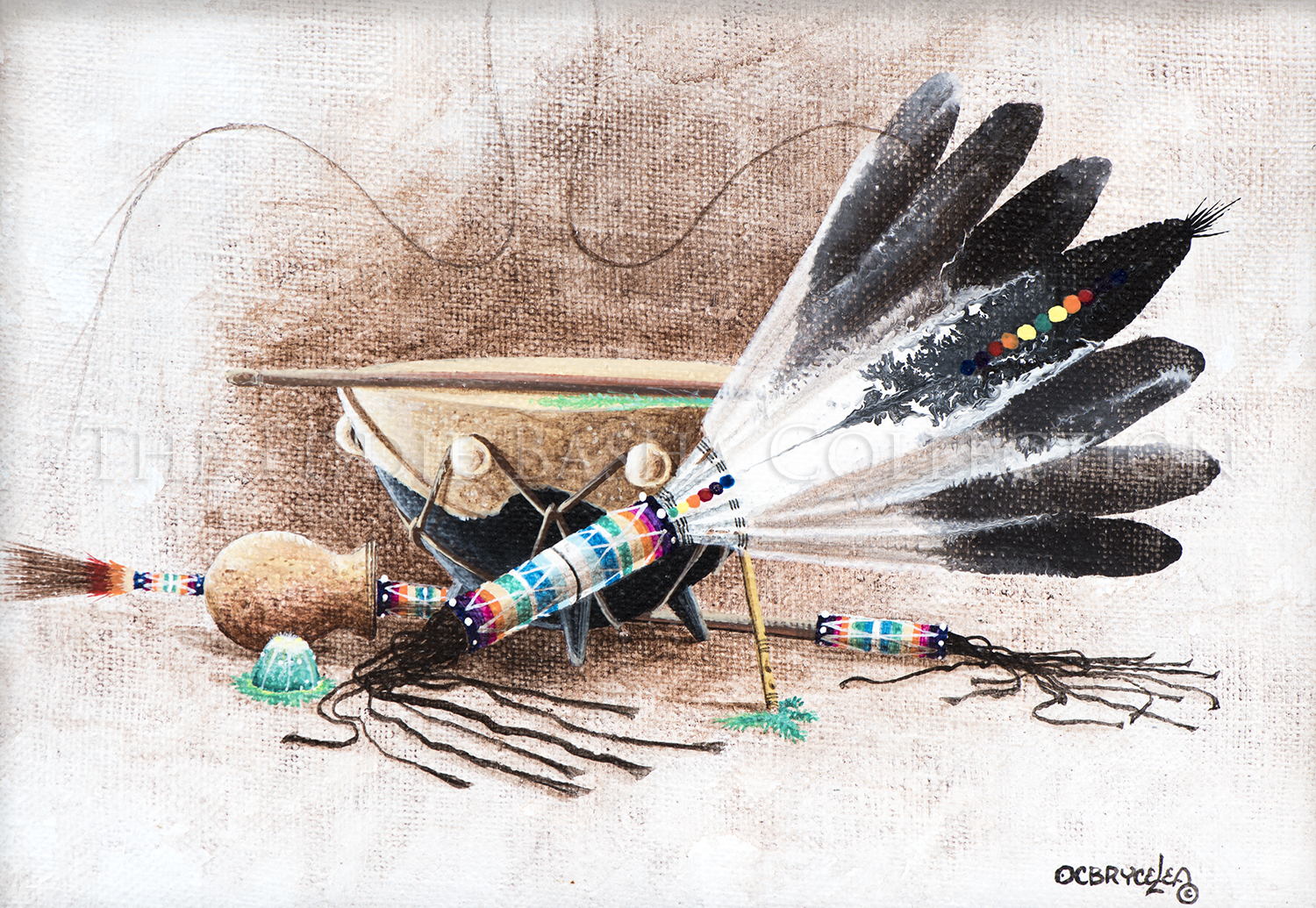
Peyote Symbol
Artist: Clifford Brycelea (b. 1953)
Description: Acrylic (1988) | Image Size: 4 ½”h x 6 ½”w; Framed Size: 8 ½”h x 10 ¾”wpainting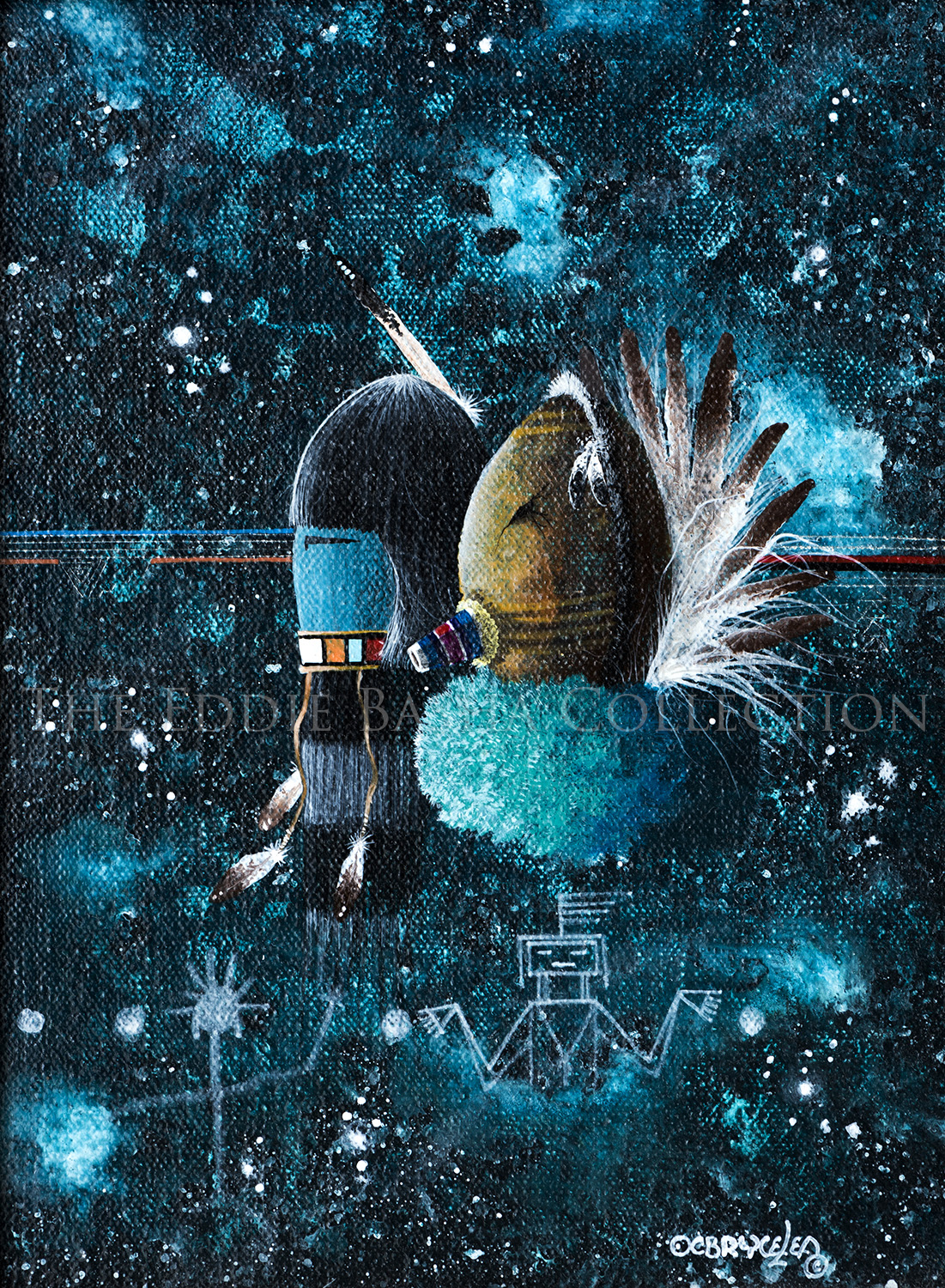
Together in One
Artist: Clifford Brycelea (b. 1953)
Description: Acrylic (1988) | Image Size: 8”h x 6”w; Framed Size: 13”h x 11”wpainting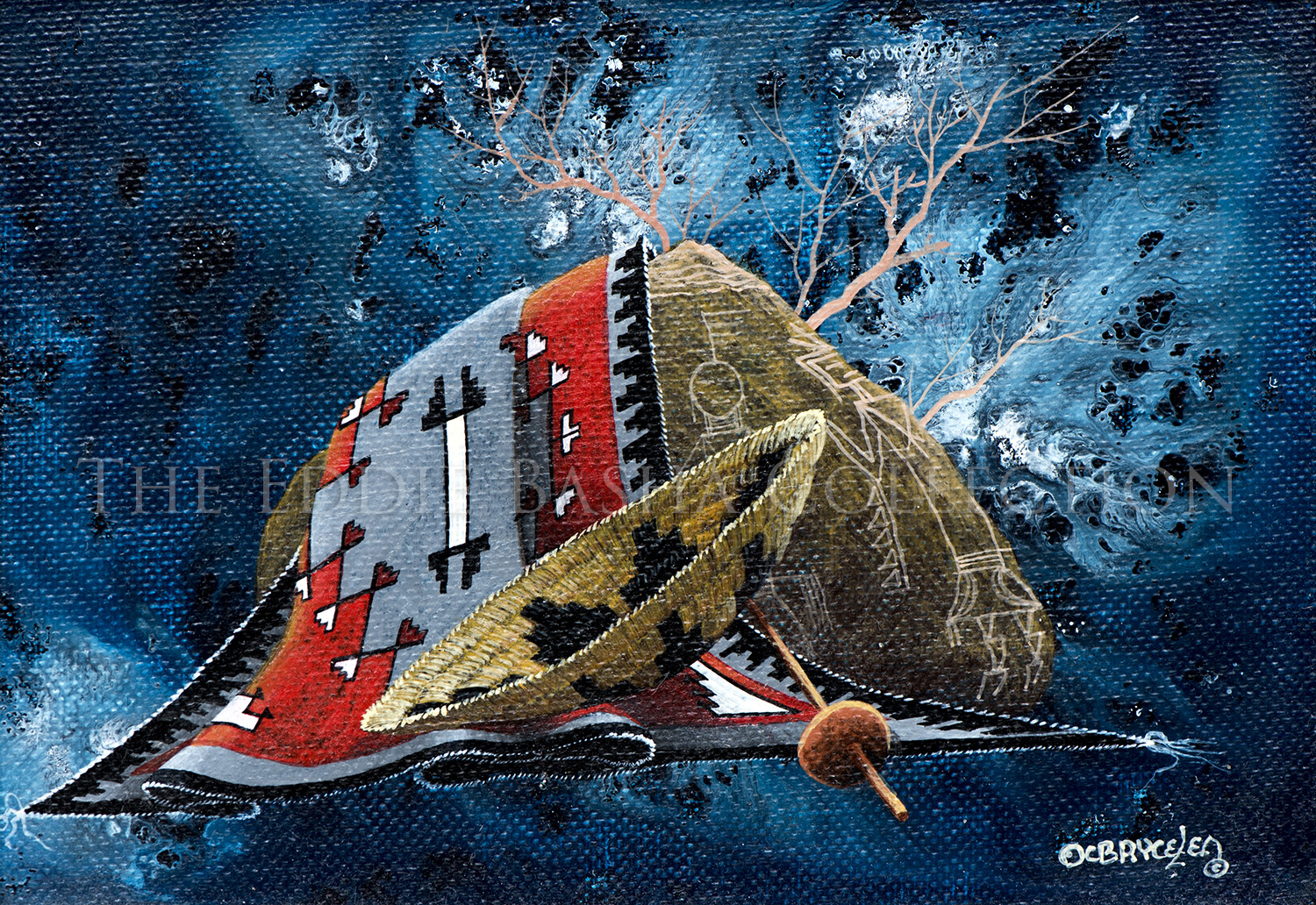
Weaver’s Creation
Artist: Clifford Brycelea (b. 1953)
Description: Acrylic (1988) | Image Size: 5”h x 7”w; Framed Size: 7 ½”h x 9 ½”wpainting
While “Weaver’s Creation” pays homage to the amazingly talented rug and basket weavers of the Navajo, “Together in One” and “Peyote Symbol” speak to the mystical and spiritually symbolic aspects of Brycelea’s culture.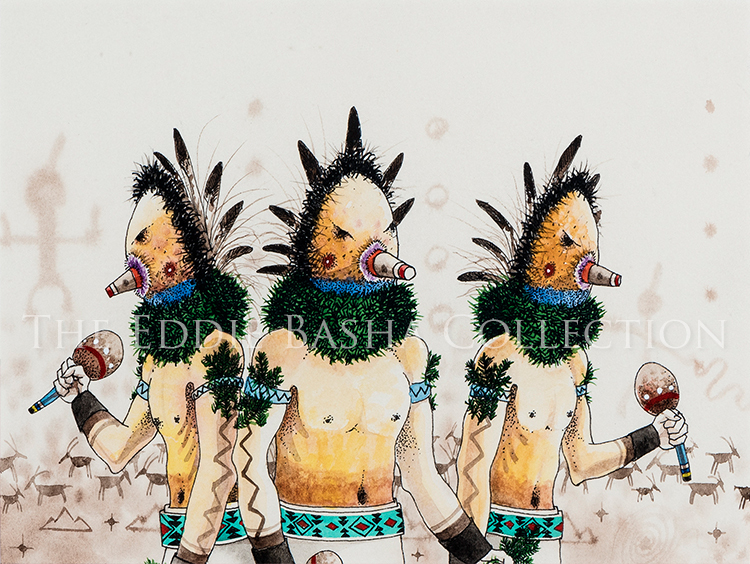
Our Sacred Image
Artist: Clifford Brycelea (b. 1953)
Description: Mixed Media | Image Size: 6”h x 8”w; Framed Size: 12 ¾”h x 16 ¾”wother
Navajo artist Clifford Brycelea describes himself as a “mystical artist, a spiritual artist, and a realist.” He renders landscapes and paintings that reflect the mythology, cultural traditions, and ceremonies of the Navajo. He graduated with a BA in art from Fort Lewis College in Durango, Colorado, and has been painting full-time since the mid-1970’s. He was awarded the 1987 artist of the year by the Indian Arts & Crafts Association and has won three gold medals presented by the American Indian Cowboy Artists Society. His work and his career were the subject of a cover article in Southwest Art Magazine.
Brycelea met and befriended novelist Louis L’Amour when he was in Durango gathering research for his next book “Haunted Mesa” in 1977. The Brycelea art piece L’Amour purchased on that visit became the cover art for that book. Subsequently, L’Amour featured numerous Brycelea illustrations in many of his short stories.
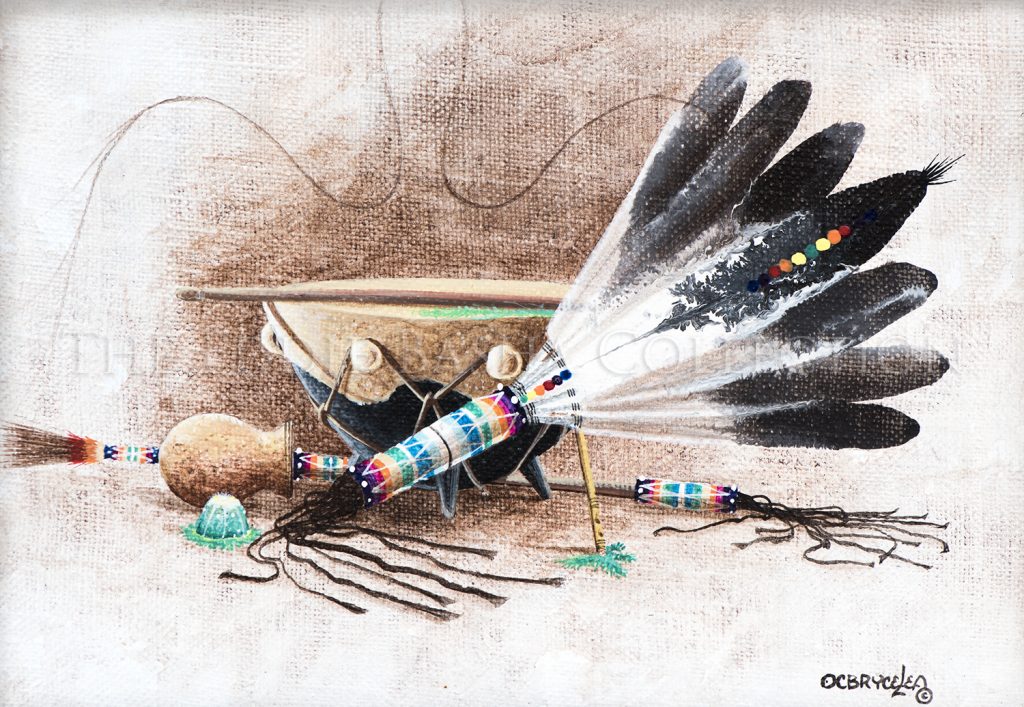 Acrylic (1988) | Image Size: 4 ½”h x 6 ½”w; Framed Size: 8 ½”h x 10 ¾”w
Acrylic (1988) | Image Size: 4 ½”h x 6 ½”w; Framed Size: 8 ½”h x 10 ¾”wPeyote Symbol
Artist: Clifford Brycelea (b. 1953)
Description:
Acrylic (1988) | Image Size: 4 ½”h x 6 ½”w; Framed Size: 8 ½”h x 10 ¾”w
painting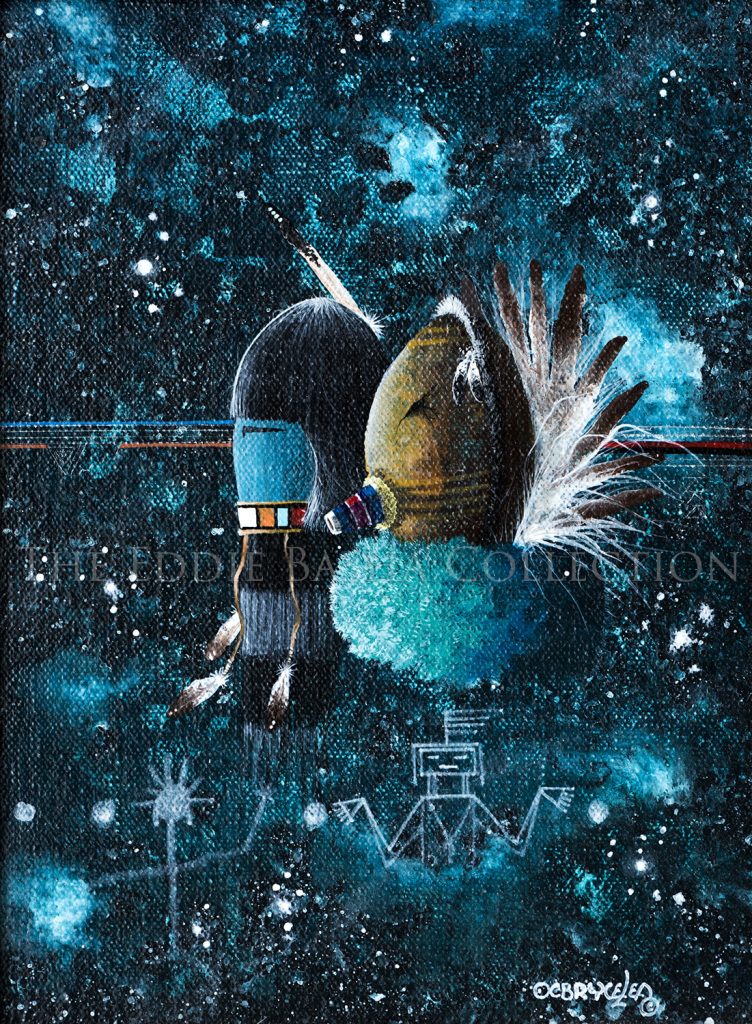 Acrylic (1988) | Image Size: 8”h x 6”w; Framed Size: 13”h x 11”w
Acrylic (1988) | Image Size: 8”h x 6”w; Framed Size: 13”h x 11”wTogether in One
Artist: Clifford Brycelea (b. 1953)
Description:
Acrylic (1988) | Image Size: 8”h x 6”w; Framed Size: 13”h x 11”w
painting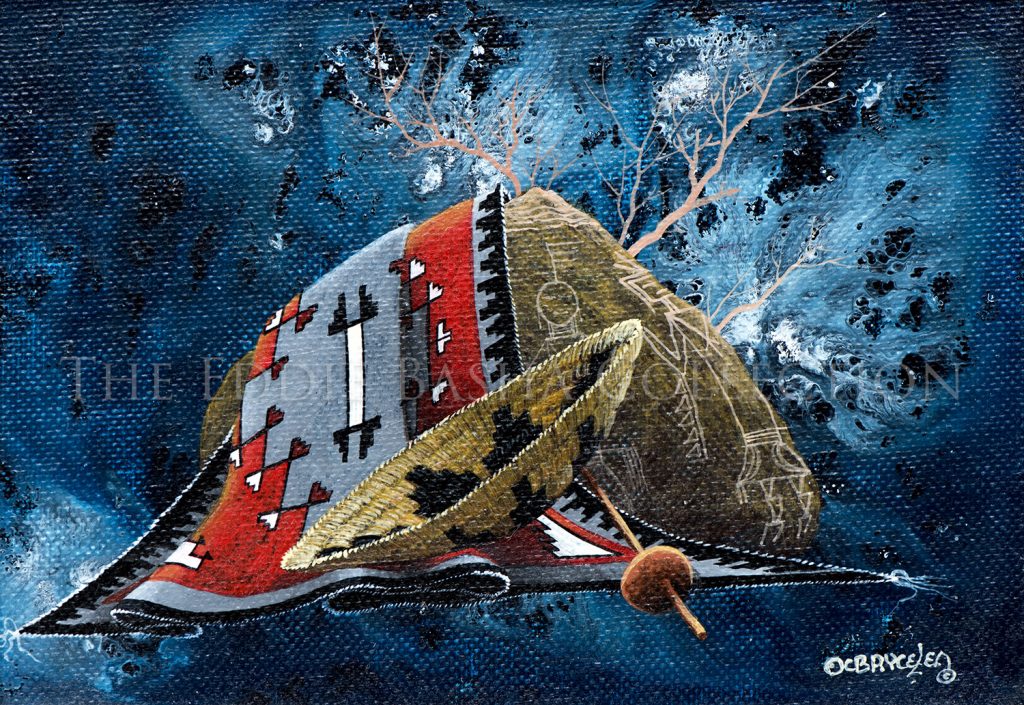 Acrylic (1988) | Image Size: 5”h x 7”w; Framed Size: 7 ½”h x 9 ½”w
Acrylic (1988) | Image Size: 5”h x 7”w; Framed Size: 7 ½”h x 9 ½”wWhile “Weaver’s Creation” pays homage to the amazingly talented rug and basket weavers of the Navajo, “Together in One” and “Peyote Symbol” speak to the mystical and spiritually symbolic aspects of Brycelea’s culture.
Weaver’s Creation
Artist: Clifford Brycelea (b. 1953)
Description:
Acrylic (1988) | Image Size: 5”h x 7”w; Framed Size: 7 ½”h x 9 ½”w
While “Weaver’s Creation” pays homage to the amazingly talented rug and basket weavers of the Navajo, “Together in One” and “Peyote Symbol” speak to the mystical and spiritually symbolic aspects of Brycelea’s culture.
paintingWhile “Weaver’s Creation” pays homage to the amazingly talented rug and basket weavers of the Navajo, “Together in One” and “Peyote Symbol” speak to the mystical and spiritually symbolic aspects of Brycelea’s culture.
 Mixed Media | Image Size: 6”h x 8”w; Framed Size: 12 ¾”h x 16 ¾”w
Mixed Media | Image Size: 6”h x 8”w; Framed Size: 12 ¾”h x 16 ¾”wNavajo artist Clifford Brycelea describes himself as a “mystical artist, a spiritual artist, and a realist.” He renders landscapes and paintings that reflect the mythology, cultural traditions, and ceremonies of the Navajo. He graduated with a BA in art from Fort Lewis College in Durango, Colorado, and has been painting full-time since the mid-1970’s. He was awarded the 1987 artist of the year by the Indian Arts & Crafts Association and has won three gold medals presented by the American Indian Cowboy Artists Society. His work and his career were the subject of a cover article in Southwest Art Magazine.
Brycelea met and befriended novelist Louis L’Amour when he was in Durango gathering research for his next book “Haunted Mesa” in 1977. The Brycelea art piece L’Amour purchased on that visit became the cover art for that book. Subsequently, L’Amour featured numerous Brycelea illustrations in many of his short stories.
Our Sacred Image
Artist: Clifford Brycelea (b. 1953)
Description:
Mixed Media | Image Size: 6”h x 8”w; Framed Size: 12 ¾”h x 16 ¾”w
Navajo artist Clifford Brycelea describes himself as a “mystical artist, a spiritual artist, and a realist.” He renders landscapes and paintings that reflect the mythology, cultural traditions, and ceremonies of the Navajo. He graduated with a BA in art from Fort Lewis College in Durango, Colorado, and has been painting full-time since the mid-1970’s. He was awarded the 1987 artist of the year by the Indian Arts & Crafts Association and has won three gold medals presented by the American Indian Cowboy Artists Society. His work and his career were the subject of a cover article in Southwest Art Magazine.
Brycelea met and befriended novelist Louis L’Amour when he was in Durango gathering research for his next book “Haunted Mesa” in 1977. The Brycelea art piece L’Amour purchased on that visit became the cover art for that book. Subsequently, L’Amour featured numerous Brycelea illustrations in many of his short stories.
otherNavajo artist Clifford Brycelea describes himself as a “mystical artist, a spiritual artist, and a realist.” He renders landscapes and paintings that reflect the mythology, cultural traditions, and ceremonies of the Navajo. He graduated with a BA in art from Fort Lewis College in Durango, Colorado, and has been painting full-time since the mid-1970’s. He was awarded the 1987 artist of the year by the Indian Arts & Crafts Association and has won three gold medals presented by the American Indian Cowboy Artists Society. His work and his career were the subject of a cover article in Southwest Art Magazine.
Brycelea met and befriended novelist Louis L’Amour when he was in Durango gathering research for his next book “Haunted Mesa” in 1977. The Brycelea art piece L’Amour purchased on that visit became the cover art for that book. Subsequently, L’Amour featured numerous Brycelea illustrations in many of his short stories.